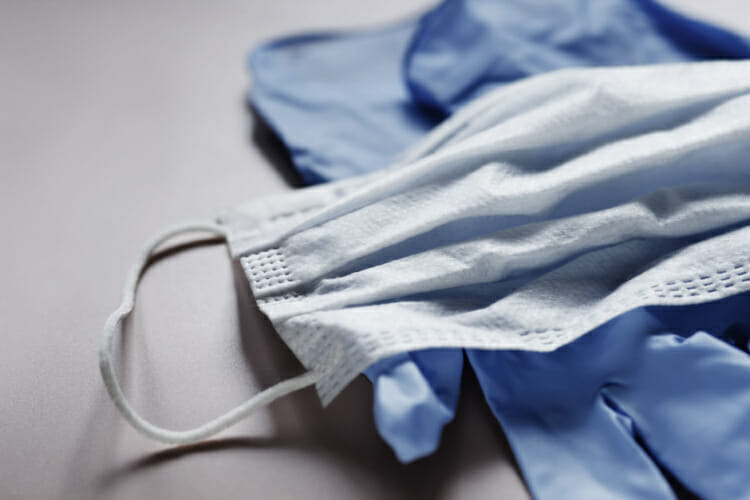Liquid gallium has been used to create an antiviral and antimicrobial coating for fabrics that eradicates several common pathogens within five minutes.
Developed by an international team of researchers, the coating adheres more strongly to fabric than some conventional metal coatings.
“Microbes can survive on the fabrics hospitals use for bedding, clothing and face masks for a long time,” said Michael Dickey, co-corresponding author of a paper on the work and Camille & Henry Dreyfus Professor of Chemical and Biomolecular Engineering at North Carolina State University (NC State). “Metallic surface coatings such as copper or silver are an effective way to eradicate these pathogens, but many metal particle coating technologies have issues such as non-uniformity, processing complexity, or poor adhesion.”
Dickey and colleagues from NC State, Sungkyunkwan University (SKKU), South Korea and RMIT University, Australia set out to develop a simple, cost-effective way to deposit metal coatings on fabric.
According to NC State, the researchers first placed liquid gallium (Ga) into an ethanol solution and used sonication to create Ga nanoparticles. The nanoparticle solution was then spray coated onto the fabric and the Ga adhered to the fibres as the ethanol evaporated.
Then the researchers dipped the Ga-coated fabric into a copper sulphate solution, creating a spontaneous galvanic replacement reaction. The reaction deposits copper onto the fabric, creating a coating of liquid metal copper alloy nanoparticles.
To test the coated fabric’s antimicrobial properties, the research team exposed the fabric to Staphylococcus aureus, Escherichia coli, and Candida albicans. These are common microbes that grow aggressively on non-coated fabrics. The copper alloy coated fabric eradicated over 99 per cent of the pathogens within five minutes, which the team said was significantly more effective than control samples coated with only copper.
The team collaborated with Elisa Crisci, assistant professor of virology at NC State, and Frank Scholle, associate professor of biological sciences at NC State, to show that the coatings also work against viruses. The coatings were tested against human influenza (H1N1) and coronavirus (HCoV 229E) and found that the coatings eradicated the viruses after five minutes.
“Our tests indicate that these liquid metal-copper coated fabrics demonstrate superior antimicrobial performance compared to other copper coated surfaces and two commercial antimicrobial facemasks that rely on copper and silver respectively,” said Vi Khanh Truong, Vice Chancellor’s Postdoctoral Fellow at RMIT University, visiting Fulbright Scholar and co-corresponding author of the research.
“This is a better method for generating metal coatings of fabrics, particularly for antimicrobial applications, both in terms of adhesion and antimicrobial performance,” said Ki Yoon Kwon, postdoctoral associate at SKKU and first author of the work.
“It could also work with metals other than copper, such as silver,” said Tae-il Kim, co-corresponding author of the research and professor at SKKU. “It is also a simple method, which should be relatively straightforward to scale up for mass production.”

